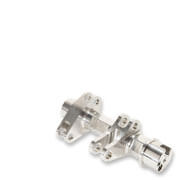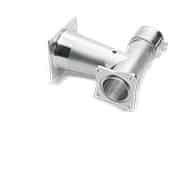
Materials Laboratory
How we control the performance of our suppliers and the quality of our products
Clemens Kremsner, 02.05.2023
A materials laboratory is indispensable in today’s world for companies specializing in the production of materials and products from these materials. It allows to drive internal developments and to control the performance of suppliers in terms of surface, heat treatment and raw material.
In internal developments, properties of the tube can be examined after forming. Here, tubes can be separated immediately after forming, the wall thickness curves can be examined and the hardness curve can be measured. The investigations can increase the strength properties by up to 40%.
It is also possible to check the condition of the raw material supplied by suppliers. In some cases, there are also specifications for maximum hardness. If you know in advance which material you are dealing with, you can react accordingly during production.
The materials laboratory has various devices that can be used for investigations. The capabilities of the individual devices can be roughly divided into the following categories:
The separating machine is used to separate samples as gently as possible in order to keep the influence of the separating machine as low as possible. In principle, most materials can be separated automatically with this device. A manual cross-cut is also possible, but rather the exception.
Das manuelle Schleif- und Poliergerät ermöglicht das Vorschleifen und Feinschleifen von Proben. Hier können Proben schnell und einfach für Härteprüfungen vorbereitet werden.
The automatic grinding and polishing unit is used to prepare sections for evaluating coatings, hardness and microstructure. All grinding and polishing wheels can be used here. Furthermore, it is possible to create a slight etching effect with special polishing suspensions, which replace chemical etching depending on the requirements.

The electrolytic etching and polishing equipment is used to visualize the individual microstructural constituents and grain sizes. Electrolytic solutions are used here to ensure safety and reproducibility. Furthermore, certain materials used in the aerospace industry cannot be prepared by wet chemical means, or only at great expense.
In addition, the following hardness measurements can be performed at RO-RA:
- According to Vickers (HV1, HV5, HV10, HV30)
- According to Brinell (HBW31.25, HBW62.5)
Depending on the application and the problem, the appropriate method is selected.
In summary, the materials laboratory is an important element for companies specializing in the production of materials and products from these materials.







